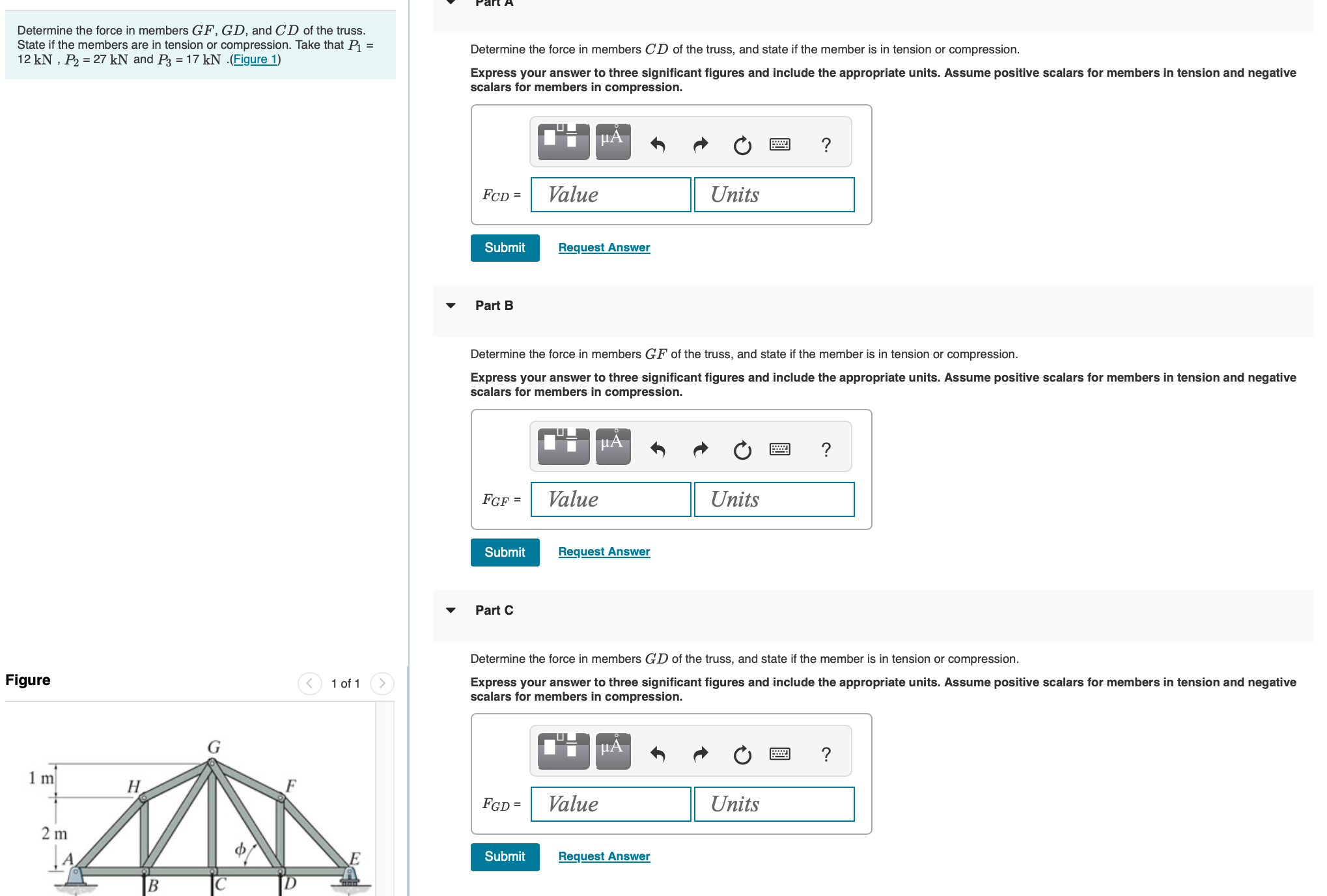(Solved): Determine the force in members \( G F, G D \), and \( C D \) of the truss. State if the members are ...
Determine the force in members \( G F, G D \), and \( C D \) of the truss. State if the members are in tension or compression. Take that \( P_{1}= \) \( 12 \mathrm{kN}, P_{2}=27 \mathrm{kN} \) and \( P_{3}=17 \mathrm{kN} \).(Figure 1) Determine the force in members \( C D \) of the truss, and state if the member is in tension or compression. Express your answer to three significant figures and include the appropriate units. Assume positive scalars for members in tension and negative scalars for members in compression. \[ \left.F_{C D}=\square\right] \] Part B Determine the force in members GF of the truss, and state if the member is in tension or compression. Express your answer to three significant figures and include the appropriate units. Assume positive scalars for members in tension and negative scalars for members in compression. \[ F_{G F}=[ \] Part C Determine the force in members \( G D \) of the truss, and state if the member is in tension or compression. Express your answer to three significant figures and include the appropriate units. Assume positive scalars for members in tension and negative scalars for members in compression. \[ F_{G D}=[\square] \] Figure 1 of 1

